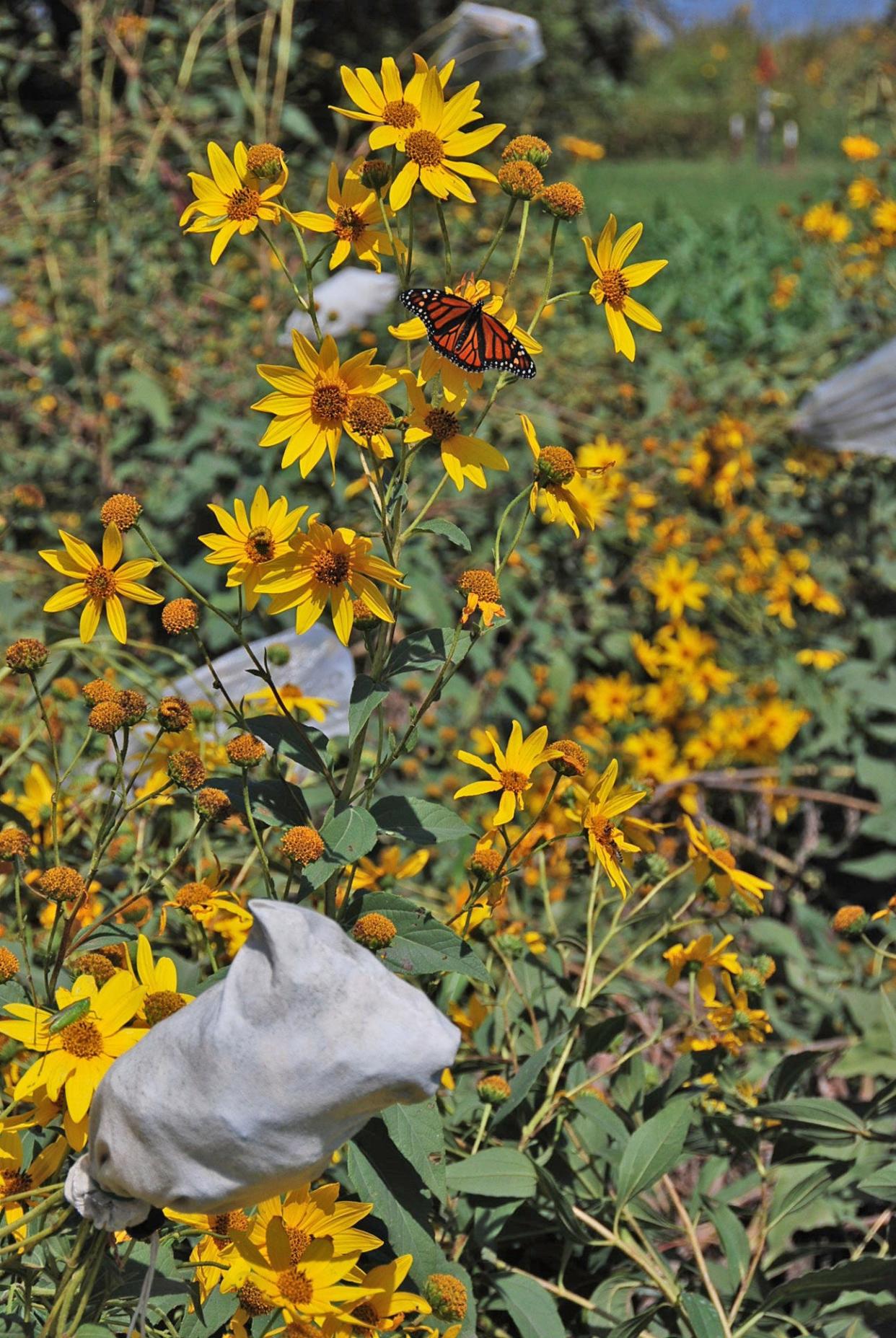Border plantings provide multiple benefits

Any pollinator-friendly field border is better than no border, but it’s important to understand what strengths different plants bring to the mix, according to Ebony Murrell, a crop protection ecologist at the Land Institute in Salina, Kansas.
The Land Institute, which has been working to develop perennial cropping systems since 1983, recently completed a research project that compared four perennial border crops and evaluated their performance in providing pollinator services, ground cover to prevent erosion and alternative forage for livestock.
Murrell, who is originally from Illinois, and research collaborator, Jessica Butters, an assistant in the entomology department at Kansas State University, wanted to explore specific differences between border plantings of various perennials under development at the Land Institute. They also compared the perennials with more traditional options such as alfalfa and native prairie mixes.
Meet the new publisher: Welcome letter from the Publisher
In a webinar now posted online, Murrell and Butters talked about what they learned from the project. The complete webinar can be found in the video library at LandInstitute.org.
The Land Institute is best known for its work developing perennial wheat, and one of the test plantings featured the institute’s trademarked grain, Kernza, which is essentially intermediate wheatgrass selectively bred to produce enlarged seeds.
The planting showed strong biomass production and mixed resistance to weed pressure but did a poor job of attracting pollinators, Murrell and Butters said. It also had the lowest crude protein of any of the trials.
Two plants that really seemed to excel in a wide range of areas were the cup plant and silflower.
Silflower is a perennial sunflower that is being developed as a potential oilseed crop at the Land Institute. It is extremely drought-hardy and has strong roots that can penetrate heavy clay soils.
The cup plant, which features yellow flowers on a tall stem, is already being grown in Germany for forage and biofuel production, Murrell said. It develops later than the silflower and also stays green longer. It grows vigorously and produces considerable biomass, which enables it to suppress weeds, she added.
Both plants proved popular with pollinators.
The control plot was a nine-way prairie mixture that included blue sage and Maximillion sunflower. It had the longest flowering season of all of the trials, Murrell said.
“In terms of pollinator resources it did quite well, and it produces a fair amount of forage if you wanted to harvest it for forage,” she said.
When it came to forage quality, the crude protein was highest in the alfalfa, but the cup plant and silflower had high digestibility and feed value too.
“All of the plants established and provided good biomass over time, except for the sainfoin,” Murrell said. “As an unmanaged border crop, it doesn’t seem to do so well.”
Sainfoin is one of several perennial legumes currently being studied at the institute. Its benefits include high palatability to cattle and excellent honey production.
Legumes also provide a natural source of soil nitrogen fertilization.
Due to the short duration of the study, the researchers were unable to draw definitive conclusions about how long these various perennial plantings would last.
“Silflower and cup plant can live for over a decade. They are very long-lived plants,” Murrell noted.
She surmised that their ability to resist weed pressure, however, might fade over time.
The annual Prairie Festival, where Land Institute researchers discuss their work and host tours of their research fields, was canceled this year for the second time in a row due to the pandemic. But the unique projects underway have continued and are still capturing the imagination of a public interested in food production that is more sustainable and less energy-intensive.
Major research themes at the institute include developing perennial sorghum and rice in addition to wheat and legumes, and ecological intensification through intercropping.
The nonprofit recently launched a new initiative that will bring together 50 researchers on six continents to advance perennial farming systems.
More from the Ag Journal: Panel: Positive changes refute climate 'doomerism'
This article originally appeared on LA Junta Tribune: The benefits of border plantings

